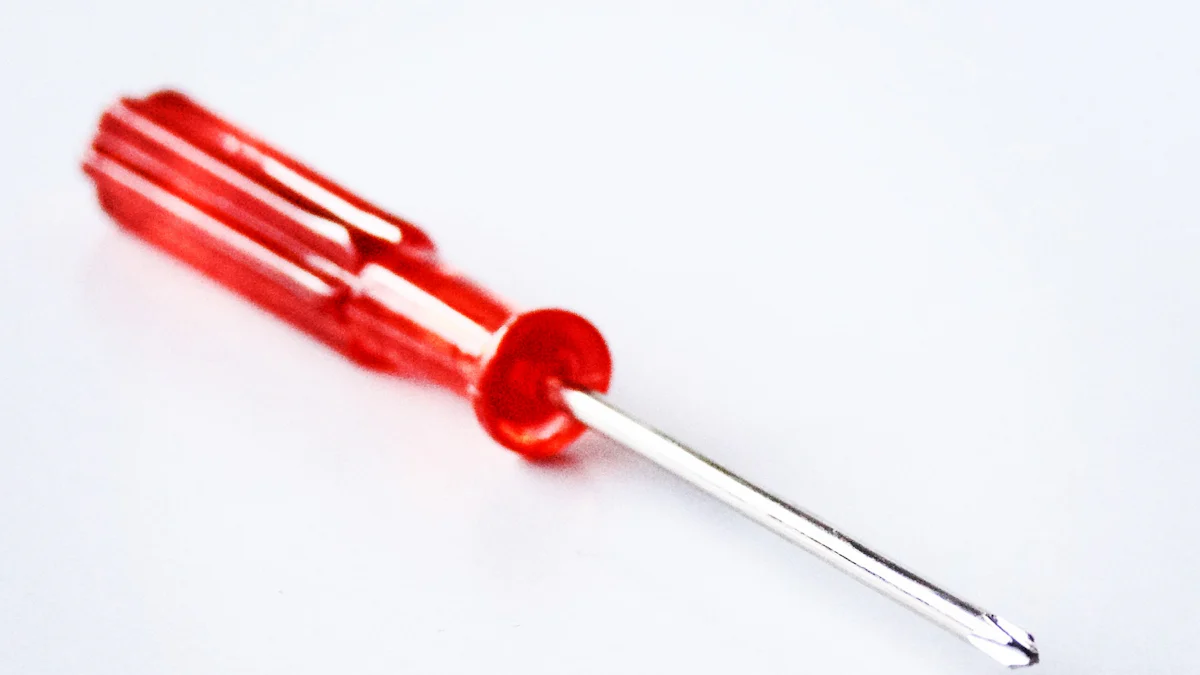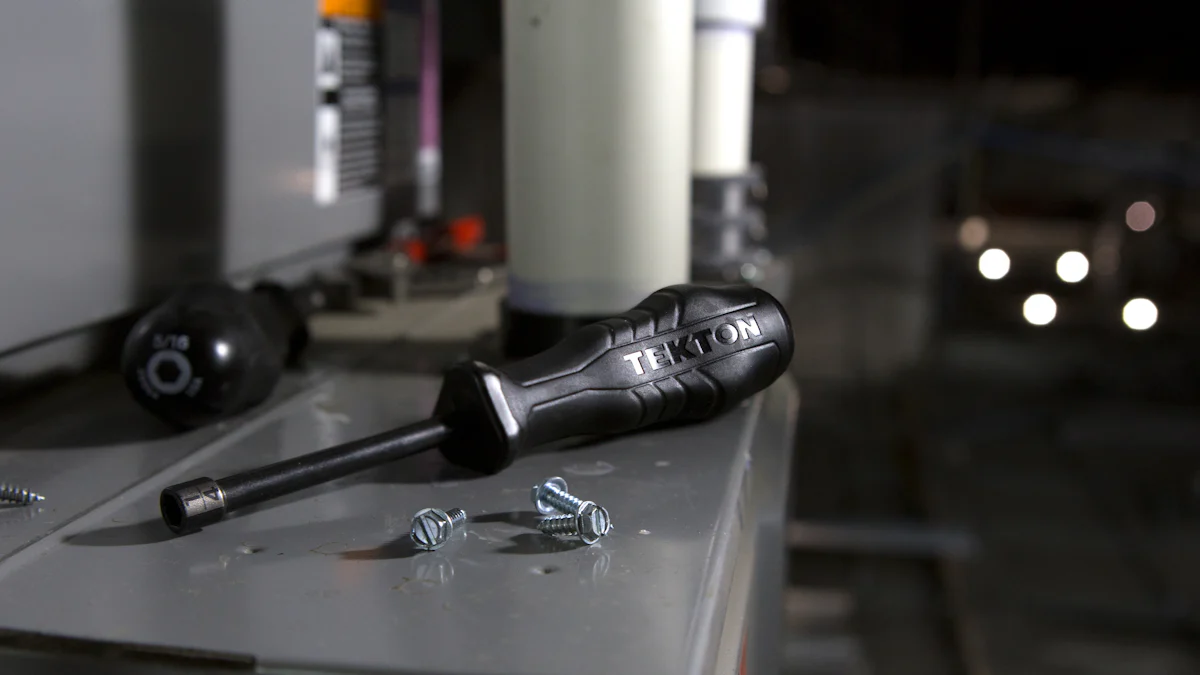
A screw holding screwdriver offers a unique advantage in fastening tasks. This specialized tool securely holds screws in place, allowing for precise and efficient work. Using the right tools ensures safety and enhances productivity. According to John M. ‘Brad’ Wagner, President of Grabber Screws, “The more contact there is between the sides of the screwdriver and the sides of the screw slot, the more force will be transferred from the tool to the screw.” This principle highlights the importance of selecting appropriate screwdrivers for specific tasks.
Understanding Screw Holding Screwdrivers
What Are Screw Holding Screwdrivers?
Definition and basic features
A screw holding screwdriver is a specialized tool designed to hold screws securely. This feature allows users to start and drive screws with precision. The unique blade design enables positive gripping action, which is essential in confined or hard-to-reach places. Screw holding screwdrivers often come with a mechanism that grips the screw head, ensuring stability during use.
Types of screw holding screwdrivers
There are several types of screw holding screwdrivers. Each type caters to different needs and screw types. Common types include:
- Slotted screw holding screwdrivers: These are ideal for slotted screws.
- Phillips screw holding screwdrivers: These work best with Phillips screws.
- Multi-bit screwdrivers: These versatile tools allow users to change the head to match various screw types, such as Phillips, slotted, and Torx screws.
How Do They Work?
Mechanism of screw holding
The mechanism of a screw holding screwdriver involves a gripping action. The tool’s blade or tip has a design that holds the screw firmly in place. This design prevents the screw from falling off during insertion. The user can then apply pressure and turn the screwdriver without worrying about the screw slipping.
Advantages over regular screwdrivers
Screw holding screwdrivers offer several advantages over regular screwdrivers:
- Precision: The gripping mechanism ensures accurate placement of screws.
- Efficiency: Users can work faster without needing to hold the screw by hand.
- Safety: Reduced risk of dropping screws in tight spaces minimizes potential hazards.
- Versatility: Multi-bit versions allow users to handle various screw types with one tool.
Choosing the Right Screw Holding Screwdriver

Factors to Consider
Size and type of screws
Selecting the correct size and type of screw holding screwdriver is crucial. Different screws require different tools. For example, slotted screws need slotted screwdrivers, while Phillips screws need Phillips screwdrivers. Multi-bit screwdrivers offer versatility with interchangeable heads. These tools can handle various screw types, such as Phillips, slotted, and Torx screws.
Material and build quality
The material and build quality of a screwdriver affect its performance and durability. High-quality materials ensure longevity and reliability. Stainless steel or chrome-vanadium steel are excellent choices for durability. A well-built screwdriver provides a comfortable grip, reducing hand fatigue during extended use. Ergonomic handles enhance control and precision.
“A good tool improves the way you work. A great tool improves the way you think.” – Jeff Duntemann
Effective Techniques for Using Screw Holding Screwdrivers

Preparing for the Task
Selecting the right screwdriver
Choose the appropriate screw holding screwdriver based on the screw type. Slotted screws need slotted screwdrivers. Phillips screws require Phillips screwdrivers. Multi-bit screwdrivers offer versatility for various screw types.
Ensuring proper grip and positioning
Hold the screw holding screwdriver with a firm grip. Position the hand comfortably to reduce fatigue. Ensure the hand aligns with the tool for better control. A secure grip prevents slipping and enhances precision.
Step-by-Step Guide
Inserting the screw into the holder
Place the screw into the holder of the screw holding screwdriver. Ensure the screw sits firmly in the holder. The screw should not wobble or fall out during use.
Aligning the screwdriver with the screw
Align the screw holding screwdriver with the screw head. Keep the tool straight to avoid damaging the screw. Proper alignment ensures efficient and accurate driving.
Applying the right amount of pressure
Apply steady pressure while turning the screw holding screwdriver. Avoid excessive force to prevent stripping the screw. Consistent pressure ensures smooth and controlled driving.
Common Mistakes to Avoid
Over-tightening screws
Avoid over-tightening screws with a screw holding screwdriver. Excessive force can damage the screw or the material. Tighten screws just enough to secure them.
Using the wrong type of screwdriver
Using the wrong type of screw holding screwdriver can cause damage. Match the screwdriver to the screw type. Incorrect tools can strip the screw head or reduce efficiency.
Maintenance and Care
Cleaning and Storage
Proper cleaning techniques
Regular cleaning ensures the longevity of a screw holding screwdriver. Use a soft cloth to wipe down the handle and blade after each use. For stubborn dirt, apply a mild soap solution. Avoid using harsh chemicals that can damage the tool. Dry the screw holding screwdriver thoroughly to prevent rust.
Safe storage practices
Proper storage maintains the functionality of a screw holding screwdriver. Store the tool in a dry place to avoid moisture buildup. Use a toolbox or drawer with compartments to keep the screwdriver organized. This prevents damage to the blade and handle. Ensure the screw holding screwdriver is not stored with heavy tools that can cause dents or scratches.
Troubleshooting Common Issues
Dealing with worn-out tips
Worn-out tips reduce the efficiency of a screw holding screwdriver. Inspect the tip regularly for signs of wear. Replace the screwdriver if the tip shows significant wear. A damaged tip can slip and strip screws. Using a fresh tip ensures better grip and precision.
Fixing loose screw holders
A loose screw holder affects the performance of a screw holding screwdriver. Tighten any loose parts using a small wrench. Check the mechanism that holds the screw. Ensure it functions correctly. If the holder remains loose, consider replacing the tool. A secure holder guarantees stability during use.
Recapping the key points, screw holding screwdrivers offer precision, efficiency, and safety. Selecting the right tool and using proper techniques enhances performance. Regular maintenance ensures longevity.
“Klein Tools have come to every electrician’s rescue with their latest Screw Holding Screwdriver. The tool has been designed with a positive gripping action, which means it holds, starts, and drives screws in those tricky, hard-to-reach spots.” – Electrician Courses 4U
Mastering these techniques will improve your work quality. Practice regularly to become proficient.
See Also
Discovering the Range of Socks for Males and Females
Top Tips for Warm Winter with Soft Cozy Sock Towels
